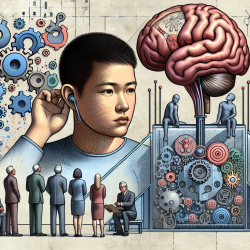Introduction
Adolescents often engage in risk behaviors that can have long-lasting impacts on their health and well-being. Two such behaviors are physical fighting and gambling. A recent study published in the Journal of Behavioral Addictions examined the relationship between these behaviors and provided insights that can be valuable for practitioners working with adolescents.
Key Findings
The study analyzed survey data from 2,276 high school students in Connecticut and found significant associations between physical fighting and gambling behaviors. Here are some key findings:
- Adolescents involved in serious physical fights were more likely to engage in at-risk or problem gambling.
- These adolescents also displayed more permissive attitudes towards gambling.
- There was a stronger relationship between problem-gambling severity and regular smoking among adolescents involved in fights.
Implications for Practitioners
Understanding these associations can help practitioners develop more effective interventions. Here are some strategies based on the study's findings:
- Enhanced Screening: Adolescents involved in physical fights should be screened for gambling problems and other risk behaviors such as smoking.
- Parental Involvement: Educate parents about the risks associated with gambling and the importance of monitoring their children's activities. Parental oversight can be a protective factor against both fighting and gambling.
- Peer Influence: Address the role of peer influence in promoting or deterring risk behaviors. Encourage adolescents to engage with peers who do not gamble or fight.
- Integrated Interventions: Develop programs that address multiple risk behaviors simultaneously. For example, interventions targeting both smoking and gambling may be more effective for adolescents involved in physical fights.
Encouraging Further Research
While this study provides valuable insights, it also highlights the need for further research. Longitudinal studies could help determine the causal relationships between these behaviors. Additionally, more research is needed to understand the role of factors such as impulsivity and parental influence in adolescent risk behaviors.
Conclusion
Practitioners working with adolescents should be aware of the associations between physical fighting and gambling. By implementing targeted screening and intervention strategies, we can help reduce these risk behaviors and promote healthier outcomes for our youth.
To read the original research paper, please follow this link: Serious physical fighting and gambling-related attitudes and behaviors in adolescents.










